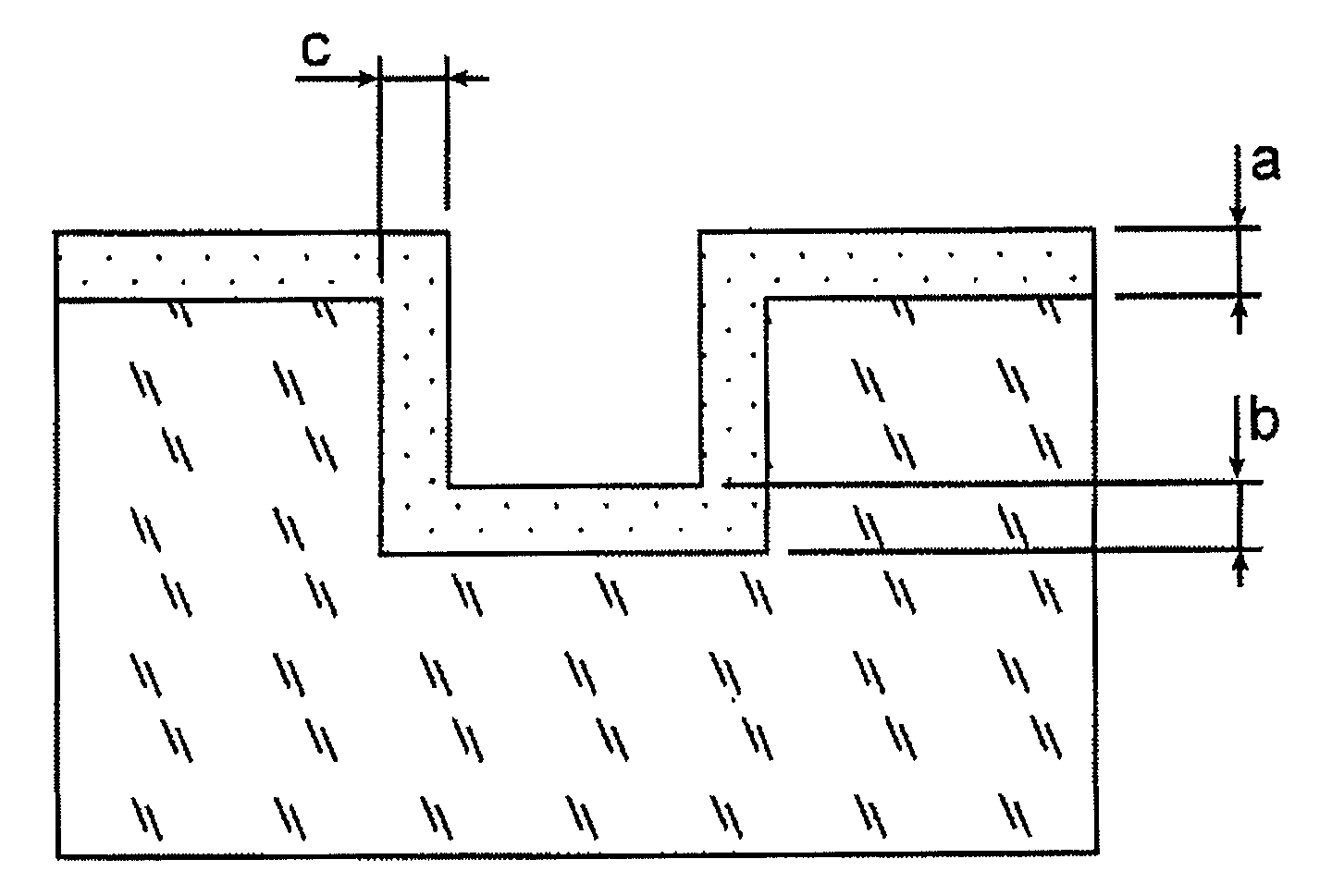Process For Producing a Coating Based on an Oxide Ceramic that Conforms to the Geometry of a Substrate Having Features in Relief
a technology of oxide ceramic and relief, applied in the direction of metallic material coating process, liquid/solution decomposition chemical coating, pretreatment surface, etc., can solve the problems of poor adhesion to the substrate, poor acuity of the edges of the relief, and low surface acuity, so as to achieve precise control of the thickness of the layer deposited. , the effect of increasing productivity
- Summary
- Abstract
- Description
- Claims
- Application Information
AI Technical Summary
Benefits of technology
Problems solved by technology
Method used
Image
Examples
example 1
[0105]Described in this example is the experimental procedure for preparing a sol-gel solution that is a precursor of a lead zirconium titanate (PZT) ceramic, and also the process for depositing this solution, by dip coating, onto metallized silicon wafers, the surface of which has micron-scale features in relief, for the purpose of obtaining coatings that conform perfectly to the geometry of the substrate. The features used in this example are trenches having a depth of 1 μm, a width of 2 μm and spaced 2 μm apart.
a) Preparation of the Sol-Gel Solution Having a Nominal PbZr0.52Ti0.48O3 Composition
[0106]Firstly, a solution was prepared comprising a lead precursor. In order to do this, 751 g (1.98 mol) of lead acetate trihydrate and 330.2 g of ethylene glycol were weighed into a round-bottomed flask topped with a distillation assembly. The mixture was homogenized for 30 minutes at 70° C. so as to allow the lead acetate to completely dissolve. Then, the temperature of the homogenous so...
example 2
[0118]Described in this example is the experimental procedure for preparing a sol-gel solution that is a precursor of a lead zirconium titanate (PZT) ceramic, and also the process for depositing this solution, by spin coating, onto metallized silicon wafers, the surface of which has micron-scale features in 3 dimensions, for the purpose of obtaining coatings that conform perfectly to the geometry of the substrate. The features used in this example are trenches having a depth of 1 μm, a width of 2 μm and spaced 2 μm apart.
a) Preparation of the Sol-Gel Solution Having a Nominal PbZr0.52Ti0.48O3 Composition
[0119]Firstly, a solution was prepared comprising a lead precursor. In order to do this, 751 g (1.98 mol) of lead acetate trihydrate and 330.2 g of ethylene glycol were weighed into a round-bottomed flask topped with a distillation assembly. The mixture was homogenized for 30 minutes at 70° C. so as to allow the lead acetate to completely dissolve. Then, the temperature of the homoge...
PUM
| Property | Measurement | Unit |
|---|---|---|
| temperature | aaaaa | aaaaa |
| temperature | aaaaa | aaaaa |
| temperature | aaaaa | aaaaa |
Abstract
Description
Claims
Application Information
 Login to View More
Login to View More - R&D
- Intellectual Property
- Life Sciences
- Materials
- Tech Scout
- Unparalleled Data Quality
- Higher Quality Content
- 60% Fewer Hallucinations
Browse by: Latest US Patents, China's latest patents, Technical Efficacy Thesaurus, Application Domain, Technology Topic, Popular Technical Reports.
© 2025 PatSnap. All rights reserved.Legal|Privacy policy|Modern Slavery Act Transparency Statement|Sitemap|About US| Contact US: help@patsnap.com


